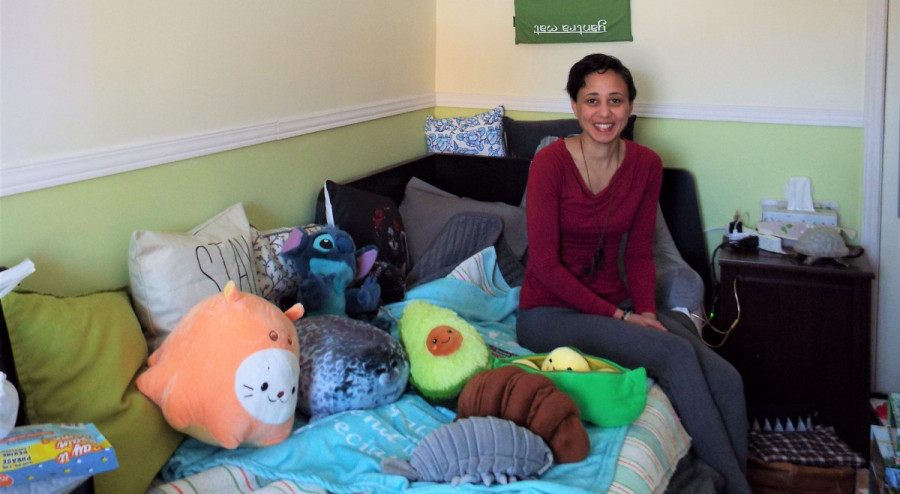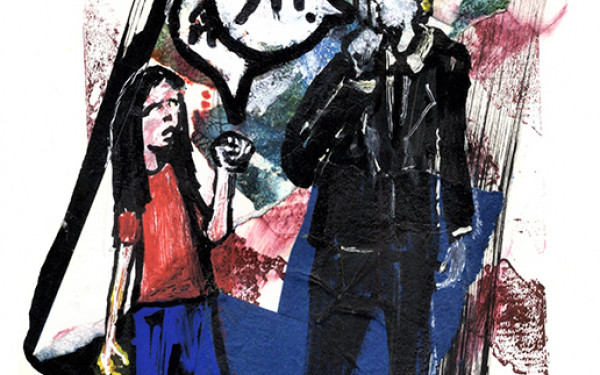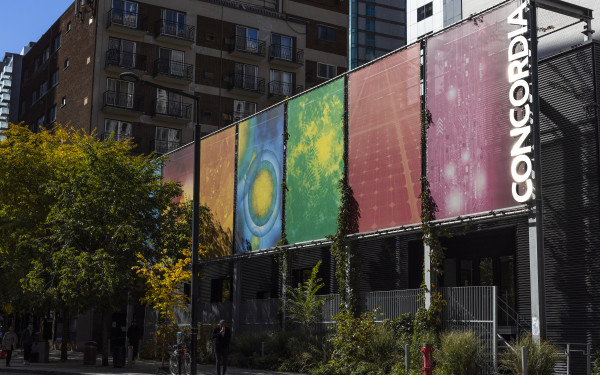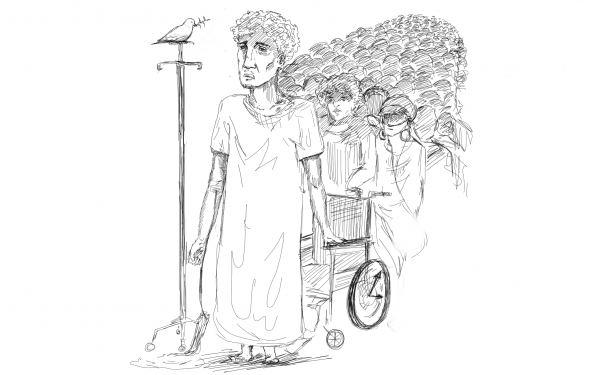Ableism Unheard
Slow Progress in Accessibility Hindering Deaf and Hard-of-Hearing Community
Pinpointing how much of the Canadian population is Deaf or hard-of-hearing has historically been a challenge.
For years, survey data compiled by Statistics Canada has tended to lean towards the erasure of Deaf people from the general demographic.
According to the Canadian Association of the Deaf, the Health and Activities Limitations Survey, which was intended to “identify the numbers and distribution of disabled persons in Canada,” does not take Deaf people into account when formulating the survey questions.
The survey uses questions that are formulated “like school examination papers” and is confusing to Deaf people, due to their first languages being neither English nor French, but American Sign Language or Langue des signes québécoise. This leads to skewed survey results which can lead to inaccurately determining the proportion of the Deaf community in the Canadian population.
The biggest gap between the Deaf and hard-of-hearing communities and hearing people stems from hearing people’s inability to understand what being Deaf actually is. Simply said: they cannot hear. Does that not seem obvious? Apparently not.
Hearing people often have no understanding what being Deaf or hard-of-hearing is until they come face to face with someone with whom they cannot communicate with verbally. It is only then when people start to ask questions.
“I often get a lot of pity because I can’t hear. People say ‘aw, you can’t hear?’ And I say, ‘aw, you can’t sign?’” said Jordy Perpiñá St-Jacques, a 3D animator and teacher from Montreal who is Deaf. Throughout his career, he has worked for animation companies like Signing Animation, as well as an ASL teacher at Vanier college and Seeing Voices Montreal.
“Taking those few extra seconds to say something again makes all the difference and makes me feel more included.” — Kelly Bron Johnson
Using Canada’s Video Relay Service, Perpiñá St-Jacques was able to sign in ASL and have it translated to English through an interpreter, which made his interview with The Link possible.
Perpiñá St-Jacques became Deaf as a small child—so he never understood what it was like to hear sounds.
“I received a full-on surgery in Quebec City for a cochlear implant in 2001 when I was 9, and it was very scary for me because I didn’t know what would happen,” he said. “I never fully understood what hearing sounds were and I could not have an extensive hearing experience.”
For people using CIs, it is often challenging to differentiate between verbal and non-verbal sounds. According to the Canadian Hard-of-Hearing Association, CIs help people hear by not turning up volume in the way a hearing aid does. Instead, they use “electrical signals from the electrodes [that] stimulate the hearing nerve, bypassing the damaged cells that cause hearing loss, allowing the brain to ‘hear’ sound.”
“I use my CI when I want to communicate with someone I really like—but I would never turn it on for my family,” he joked. Perpiñá St-Jacques is the only member of his family who is Deaf, and while they know how to sign, he still deals with noise issues living with them. For example, at the dinner table, knocking of utensils against plates and bowls, moving chairs, banging on tables, and overlapping speech cannot be filtered through his CI, so Perpiñá St-Jacques is left listening to a cacophony of noises.
Although Perpiñá St-Jacques has access to a CI, he doesn’t always use it. “I don’t like to feel like half-machine,” he said. In contrast from what hearing people might think, he does not consider himself disabled, he just speaks another language: sign language.
“People always ask if I miss sound and say things like ‘it must be so horrible being Deaf,’ but those are such weird things to say to a Deaf person,” said Perpiñá St-Jacques.
Perpiñá St-Jacques likes to include a lot of humour when talking about and teaching ASL, especially when it comes to the weird questions hearing people ask Deaf people. Making jokes helps people feel more comfortable when talking about how Deaf people are treated by hearing people.
He explained that hearing people often get anxious when they come face-to-face with him. When it comes to figuring out how to communicate, hearing people need to understand that they too play a role in communicating. “Hearing people just need to learn how to connect with us halfway, [we] can’t do all of the work,” he said.
Finding effective methods to communicate with him has been a gateway for great conversations. “People could write things down on paper, text, gesture, or really anything without using voice, get creative!” he added.
“There is a lot of access that is available now to the Deaf community, but one big wish I have is to see hearing people be more involved and for them to have access as well” said Perpiñá St-Jacques. “Deaf people do not think deafness is a problem they need to solve, Deaf people can live happily for years with access to expression.”
Kelly Bron Johnson is the founder of Completely Inclusive, a social enterprise “that aims to teach companies how to make their workplace environment and culture inclusive and accessible to all.” Being autistic and hard-of-hearing, Bron Johnson is able to use her personal experiences to advocate for those communities through her work and in everyday life.
“I know [hearing people] have different ways of accessing information, they need to realize that [communication is] a dual responsibility.” — Jordy Perpiñá St-Jacques
Bron Johnson started losing hearing in her right ear just a few years ago. When she first disclosed that she was losing her hearing to her boss, “her initial reaction was laughter, she thought it was funny,” said Bron Johnson. “Not exactly the reaction I was expecting.”
Bron Johnson is often disregarded when she asks for help with hearing. “There’s been a lot of laughter when you say you can’t hear something, everybody thinks it’s really hilarious for some reason,” she said.
Oftentimes, when Bron Johnson has told people she cannot hear them, she has been accused of lying to them.
“It’s frustrating for me because I genuinely cannot hear them and taking those few extra seconds to say something again makes all the difference and makes me feel more included,” she explained. “But hearing people think of it like a personal attack.”
Hear Entendre Québec is a non-profit in Montreal that sheds light on the invisibility of hearing loss.
Heidi Wager, the organization’s executive director, explained that “a lot of people with hearing loss will say ‘I got fitted with a hearing aid but it’s sitting in a drawer,’ or, ‘I have accessible devices, but I have no idea how to use [them].’”
These are mainly the types of issues the members at Hear Entendre Québec face. Wager explained that there are a lot of accessibility services out there, but they are just not being used. When people reach out for services to help with their hearing loss, they are often given devices and shown instructions so quickly that they go home not fully understanding how to use it entirely, then feel uncomfortable reaching out for a second time.
There are also many accessibility services available to the public for free that are often ignored or forgotten about. For example, Wager explains that most video call services and video services have closed captioning options, but administrators just forget to turn them on.
“You don’t need to ask if someone needs captioning, turn on the captioning,” she said. “If they don’t need it, they can turn it off. Just include the captioning, it’s standard practice.”
It is up to the hearing community to make life easier for the Deaf and hard-of-hearing communities. These communities are already doing their part to develop services, products, and practices to get through the everyday life in a hearing world. Yet, that all gets stunted if hearing people are not willing to adapt a little bit and think a little more creatively.
“It’s a systemic problem that we need to catch up on a lot, especially in the education system [...] I know [hearing people] have different ways of accessing information, they need to realize that [communication is] a dual responsibility,” said Perpiñá St-Jacques. “There are so many things we need to work on, and the only people who can work on fixing the system are hearing people.”
This article originally appeared in Volume 43, Issue 6, published November 8, 2022.


_600_832_s.png)




_600_375_90_s_c1.jpg)